Setup ADB and Fastboot Driver With Android SDK
Android Debug Bridge (adb) is a versatile command line tool that lets you communicate with an emulator instance or connected Android-powered device. By having ADB and fastboot, it helps to install and flash zip into your device like custom recovery, insecure bootloader, images, root package, stock or custom firmware, stock or custom ROMs. Both ADB and fastboot drivers are usually use in the early modification stage on android devices. It is a must to install for Google Nexus device’s owners.
In this post, we going to show you how to setup ADB and fastboot driver on Windows computer. At the end of the post, we will show you how to setup and use the fastboot driver to flash *img or *zip file into your devices.
How To Setup ADB and Fastboot Driver With Android SDK For Windows
Let’s get started to install Android SDK on your Windows PC.
- Download Android SDK Tools Only for Windows from Android Development page.
- Download Java SE Development Kit 7 (JDK) – Select Windows x86 bits version although your PC is x64.
- Run and install java SE Development Kit 7 executable installation file.
- Leave all the selections as default and proceed to complete installation.
- Run and install Android SDK Tools executable installation file.
- Leave all the selections as default and proceed..Select Start SDK Manager and press finish.

- In Android SDK Manager, select both Android SDK Platform-tools and Google USB driver to install.

- Press Install 2 packages, choose Accept and press Install.

- Let’s the download to run, a log file will appear once installation is complete.

- You have now ABD and fastboot driver installed in your PC computer.
- To test it out, connect your android devices to computer.
- Computer will auto detect and install necessary USB drivers.
- Complete and enjoy.
How To Use Fastboot To Flash File
Fastboot is a basic tool to assist you to flash a custom image, kernel or custom recovery files into your devices. Fastboot driver is included in Android SDK pacakge. Follow installation tutorial above to complete the ADB and fastboot driver installation. Back to topic, in order to use fastboot, your android devices need to be booted into bootloader/download mode/fastboot mode. Due to variety of android devices brands, different manufacturers do have their own methods to boot into bootloader/download mode/fastboot mode. Check on the manufacturer official website to know more on how to boot into bootloader/download mode/fastboot mode for your devices.
I’ll show you an example below how to flash a image file with fastboot.
- Complete ADB and fastboot driver installation with above tutorial.
- Copy adb.exe, AdbWinApi.dll from C:\\android-sdk-windows\platform-tools and fastboot.exe in C:\\android-sdk-windows\tools to C:\Fastboot. (Create C:\\fastboot folder if you do not have it)
- You should see adb.exe, AdbWinApi.dll and fastboot.exe in C:\Fastboot folder.
- Copy an image file (*.img) into the root of the folder C:\Fastboot.
- Goto Windows Start button –> Type cmd in the Search programs and files box.
- Type cd C:\fastboot in the command prompt windows.

- Boot your devices into bootloader/download mode/fastboot mode.
- Connect your devices to computer.
- Type command into the command prompt to flash the image file. For instant, fastboot flash boot boot.img.
- You can do more with fastboot. For instant, reboot the device, check the fastboot status of your devices and more.
- Type fastboot help in the command prompt to know more.
us or give us a if it works for you.


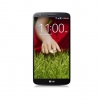
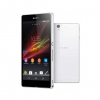
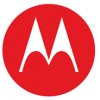
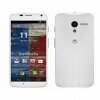
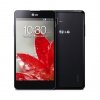

Pingback: How to Enable USB Debugging Mode on Android Devices - AndroidTeen
Pingback: How To Root HTC One (All Variants) - AndroidTeen
Pingback: HTC First : Root and Install ClockWorkMod Touch Recovery v6.0.3.2 - AndroidTeen
Pingback: How To Root Sony Xperia L on Android 4.1.2 Jelly Bean Firmware 15.0.A.1.36 - AndroidTeen
Pingback: How to Root LG Optimus L9 P76* Series on Android 4.1.2 Jelly Bean Stock Firmware - AndroidTeen
Pingback: How to Root HTC One SV on Android 4.1 Jelly Bean Stock Firmware - AndroidTeen
Pingback: How To Unlock Bootloader For Nexus Devices - AndroidTeen
Pingback: How to Root Sony Xperia SP Android 4.1.2 Jelly Bean 12.0.A.2.245 - AndroidTeen
Pingback: How To Root Galaxy Nexus Android 4.3 - AndroidTeen
Pingback: How to Root Motorola Moto X Android 4.2.2 Jelly Bean Official Firmware - AndroidTeen
Pingback: How To Unlock Bootloader on Moto X - AndroidTeen
Pingback: How To Unlock Bootloader On HTC Butterfly S - AndroidTeen
Pingback: Install ClockWorkMod/TWRP Recovery on Xperia Z Ultra - AndroidTeen
Pingback: How To Root HTC Butterfly S - AndroidTeen
Pingback: Motorola Moto X official jelly bean 4.2.2 firmware update
Pingback: Root Motorola Droid Ultra/Maxx/Mini with PwnMyMoto - AndroidTeen
Pingback: Nexus 5 Kit Kat 4.4 Simple Guide To Root